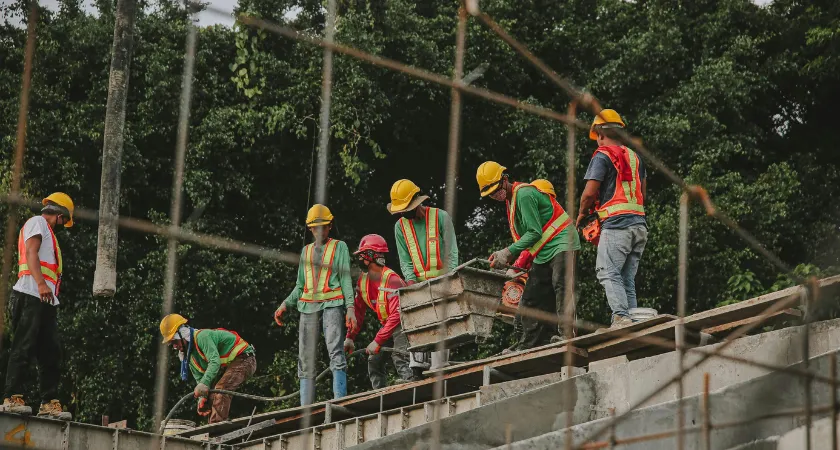
The construction industry remains a vital but relatively small part of Massachusetts’ labor market, employing just 5.3% of the state’s workforce in 2025—a figure that ranks the Bay State as the 10th lowest in the nation for the share of workers in the sector.

The finding comes as the U.S. construction industry navigates a period of conflicting economic forces. On the positive side, demand for new housing and large-scale infrastructure remains elevated, fueled by a persistent housing shortage and billions in federal investment from recent infrastructure packages. Yet the sector is also feeling the weight of notable headwinds: skilled labor remains in short supply, construction spending has slowed in recent months, and high interest rates have tempered some private investment.
Historically, construction employment has moved in step with the broader economy—growing during expansions and contracting sharply during downturns. Following the COVID-19 pandemic, the sector saw a robust rebound, with employment surpassing 8 million workers nationwide in 2024, according to the Bureau of Labor Statistics. Massachusetts contributed to that growth, but its share of construction jobs remains modest compared to states with larger residential and industrial building sectors.
Industry experts note that the relatively small proportion of construction jobs in Massachusetts is partly due to its diversified economy, where sectors like education, healthcare, technology, and finance make up a larger slice of the employment base. Still, the need for skilled tradespeople is strong, and industry leaders caution that the state could face project delays and higher building costs if workforce gaps are not addressed.

Across the country, states with larger construction employment shares—often in the Sun Belt and Mountain West—benefit from rapid population growth and major industrial investments. Massachusetts’ slower population growth, higher land costs, and stricter zoning laws have kept construction activity more measured. However, ongoing projects in transportation, energy infrastructure, and affordable housing could help sustain the sector’s stability in the coming years.
While the U.S. construction workforce remains above pre-pandemic levels, economic uncertainty looms. Analysts warn that if interest rates stay high and private-sector projects slow further, some regions could see employment declines—although federally funded infrastructure projects are expected to act as a partial buffer.
Massachusetts’ construction sector now faces a dual challenge: ensuring there are enough skilled workers to meet demand while navigating the risk of slower economic growth. The state’s relatively low share of construction jobs could make it less vulnerable to sudden downturns but also means that gains from a national building boom may be more limited.
Originally reported by Construction Coverage in West Virginia's News.